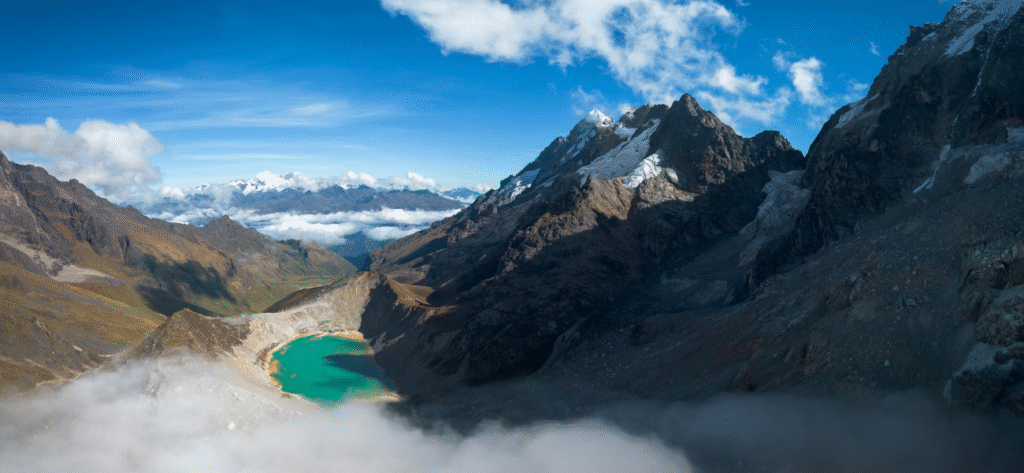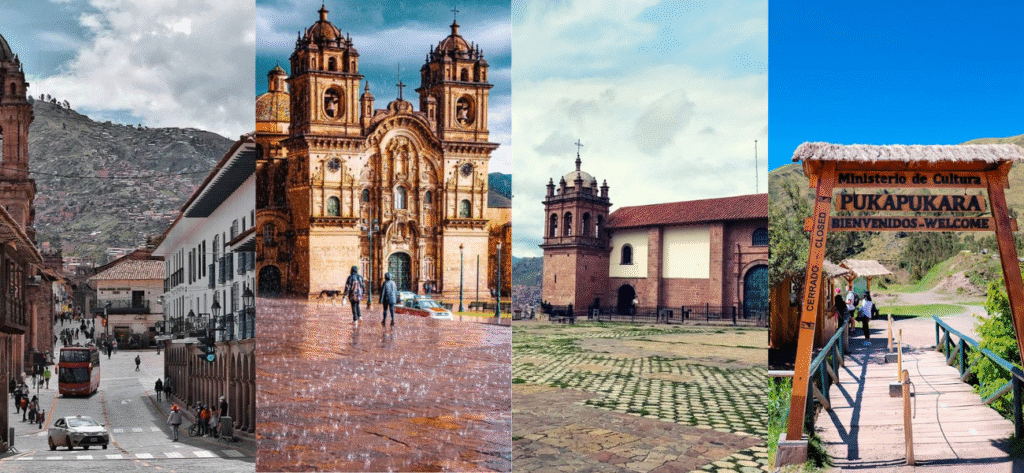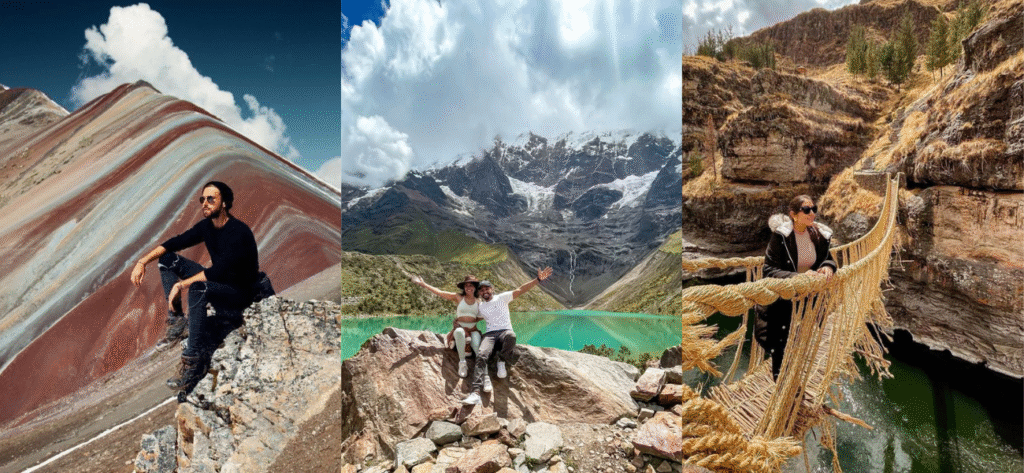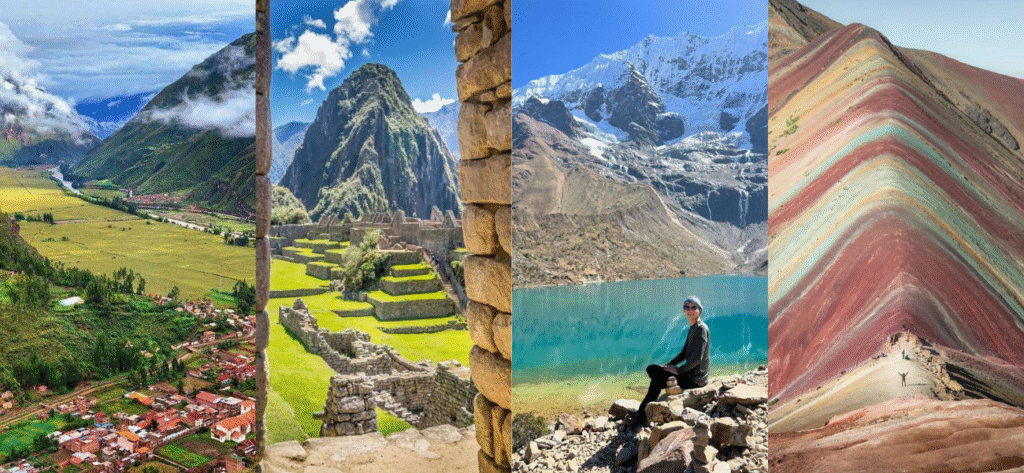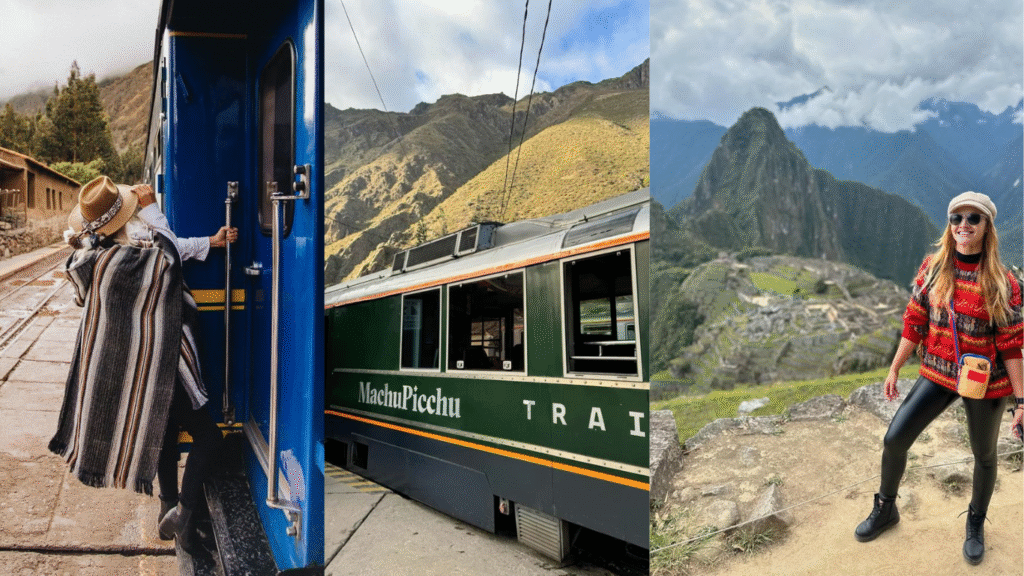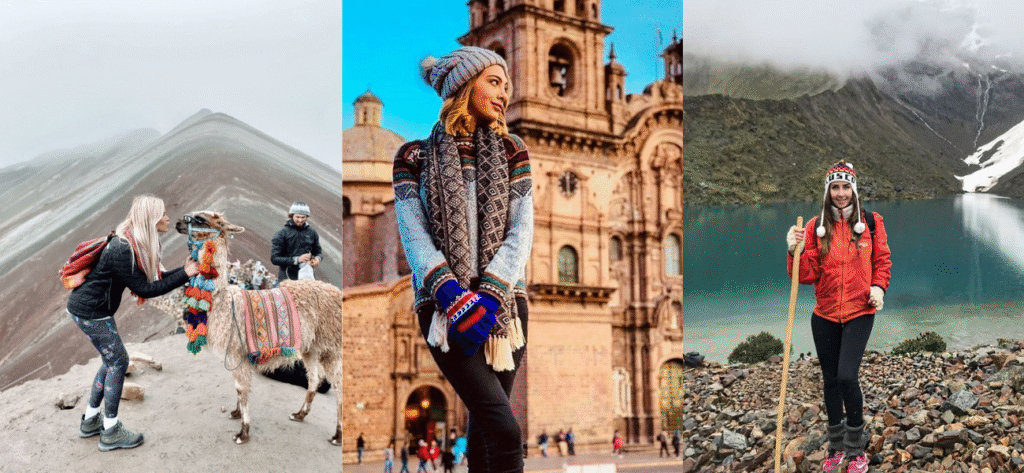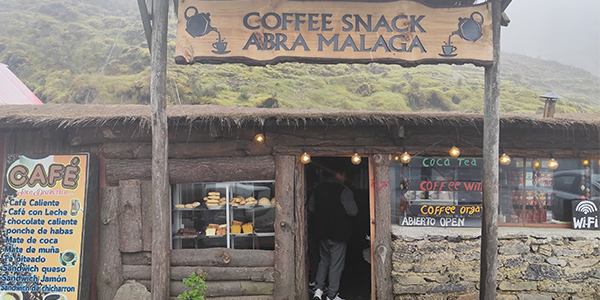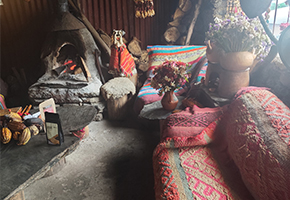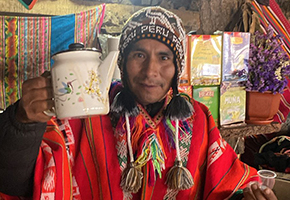How Difficult Is the Salkantay Trek? Everything You Need to Know
Dreaming of trekking to Machu Picchu via the Salkantay Trail but wondering if you’re fit enough? You’re not alone! In this guide, we break down the difficulty level of the Salkantay Trek so you can prepare with confidence.
Salkantay Trek at a Glance
- Duration: 4 to 5 days
- Highest point: 4,650 meters (15,256 feet) at Salkantay Pass
- Total distance: Around 70 km (43 miles)
- Difficulty: Moderate to challenging
Let’s dive into what makes the trek tough — and what makes it totally doable!
Altitude: The Real Challenge
The biggest hurdle for many hikers is not the distance, but the altitude. The Salkantay Pass sits at a lung-busting 4,650 meters above sea level. At this height, the air has less oxygen, which can make breathing harder and cause altitude sickness (known locally as soroche).
Tip: Spend at least 2-3 days in Cusco a 3,400 m to acclimatize before starting your trek.
Daily Distances
Expect to hike 6 to 9 hours per day, covering distances of 12 to 22 kilometers (7 to 14 miles). Some days are easier, with gentle downhill sections, while others (like the day you cross the pass) are longer and tougher.
Terrain: From Mountains to Jungle
One of the unique things about the Salkantay Trek is the changing landscape:
- Rocky, steep climbs near the mountain passes
- Muddy trails in the cloud forest
- Gravel and dirt paths in lower jungle zones
- Good footwear is essential!
Weather: Cold, Hot, and Wet
The weather adds an extra layer of challenge. You’ll experience:
- Freezing temperatures (especially at night near the pass)
- Hot and humid conditions as you descend into the jungle
- Possible rain even in dry season
Tip: Layered clothing is key — and always bring a rain jacket!
Is the Salkantay Trek for Beginners?
You don’t need to be an elite athlete, but you should have:
- A good fitness level
- Some hiking experience (at least a few long walks before your trip)
- Willingness to push through tough moments
Many beginners have completed the Salkantay Trek — with the right preparation and mindset.
Horses and Support Available
If you’re worried about carrying a heavy pack, relax! Most tour companies provide horses to carry your extra gear. You’ll only need to hike with a small daypack.
Comparing Salkantay with Other Treks
- Salkantay Trek: Higher altitude, longer distance, fewer Inca ruins, but cheaper and permits are always available.
- Inca Trail: More archaeological sites, lower altitude, but requires booking months in advance.
How to Make the Trek Easier
- Acclimatize properly before starting
- Train with hikes and cardio at home
- Use trekking poles for stability
- Stay hydrated and eat well on the trail
- Go with a reputable tour company for support and guidance
Final Verdict: Tough but Achievable!
The Salkantay Trek is no walk in the park — it’s a physical and mental challenge. But with preparation, thousands of hikers of all ages and backgrounds complete it every year. The reward? Epic mountain views, the majestic Humantay Lake, and the satisfaction of reaching Machu Picchu on foot. Totally worth the effort!
What you should do before booking Salkantay Trek to Machu Picchu
1. What is the Salkantay Trek, and how does it compare to the Inca Trail?
The Salkantay Trek is an alternative route to Machu Picchu, offering breathtaking landscapes, including snow-capped mountains, cloud forests, and high-altitude passes. Unlike the Inca Trail, the Salkantay Trek does not require a permit and is less crowded, providing a more adventurous experience.
2. How many days does the Salkantay Trek take to reach Machu Picchu?
The standard Salkantay Trek takes 5 days and 4 nights, covering approximately 72 km (45 miles). However, there are shorter and longer variations of the trek available.
3. What is the difficulty level of the Salkantay Trek?
The Salkantay Trek is considered moderate to challenging, as it involves hiking at high altitudes and steep ascents. The highest point is the Salkantay Pass at 4,650 m (15,255 ft). Proper acclimatization is recommended before starting the trek.
4. Do I need a permit to hike the Salkantay Trek?
No, unlike the Inca Trail, the Salkantay Trek does not require a special permit. However, you do need an entrance ticket for Machu Picchu, which should be booked in advance.
5. What is the best time of year to hike the Salkantay Trek?
The best time to hike the Salkantay Trek is during the dry season (April to October). The weather is more stable, with clear skies and less rain. The rainy season (November to March) can make the trail muddy and challenging.
6. What should I pack for the Salkantay Trek?
Essential items include:
- Hiking boots (waterproof and comfortable)
- Warm layers (temperatures drop at night)
- Rain jacket or poncho
- Sleeping bag (suitable for cold weather)
- Sun protection (hat, sunglasses, sunscreen)
- Water bottle and purification tablets
- Basic first aid kit
7. Is altitude sickness a concern on the Salkantay Trek?
Yes, altitude sickness can be an issue, especially at the Salkantay Pass (4,650 m). It is recommended to spend a few days in Cusco (3,400 m) before the trek to acclimatize. Staying hydrated, avoiding alcohol, and chewing coca leaves can help with symptoms.
8. How do I get to Machu Picchu from the end of the Salkantay Trek?
After reaching Hidroelectrica, you have two options:
- Hike 3 hours to Aguas Calientes.
- Take a 30-minute train from Hidroelectrica to Aguas Calientes.
From Aguas Calientes, you can hike or take a bus up to Machu Picchu.
9. Are there accommodation options along the Salkantay Trek?
Yes, most trekking companies provide campsites or eco-lodges along the route. Some upgraded tours offer more comfortable accommodations, such as glass cabins or domes. The final night is usually spent in a hotel in Aguas Calientes.
10. Can I visit Machu Picchu without hiking the Salkantay Trek?
Yes, you can take a train from Cusco to Aguas Calientes, followed by a short bus ride or hike up to Machu Picchu. This is the most popular option for visitors who prefer not to hike.
You must be interested
- Salkantay Trek to Machu Picchu
- Salkantay Trail 5 days 4 nights
- Salkantay Trek difficulty level
- Salkantay vs Inca Trail comparison
- Best time to hike Salkantay Peru
- Salkantay Trek tour price 2026
- Guided Salkantay Trek packages
- Salkantay Trek altitude and acclimatization
- Salkantay Trekking tours from Cusco
- Salkantay Trek full itinerary
Salkantay Travel Information
- Salkantay Trek Food: What You’ll Eat on the Trail
- Birds of the Salkantay Trek: Species You Can Spot on the Route
- Is the Salkantay Trek Dangerous?
- Salkantay Trek Altitude: Heights Along the Route
- Flora and Fauna in Salkantay Trek
- Altitude Sickness on the Salkantay Trek
- Salkantay Trek Difficulty: How Hard Is the Route?
- Salkantay Trek FAQs: Answers to Common Questions
- Best Time to do Salkantay trek
- Training for Salkantay Trek: How to Get Ready
- How long is the Salkantay Trek?
- Salkantay Trek Price: How Much Does It Cost?
- What Is the Salkantay Trek?
- What to Bring on the Salkantay Trek?
- Best Time to Do Salkantay Trek
- Your Insider’s Guide to Salkantay Trek
- Where is Salkantay?
- Salkantay highlights
- Tour Montaña de Colores con Transporte


